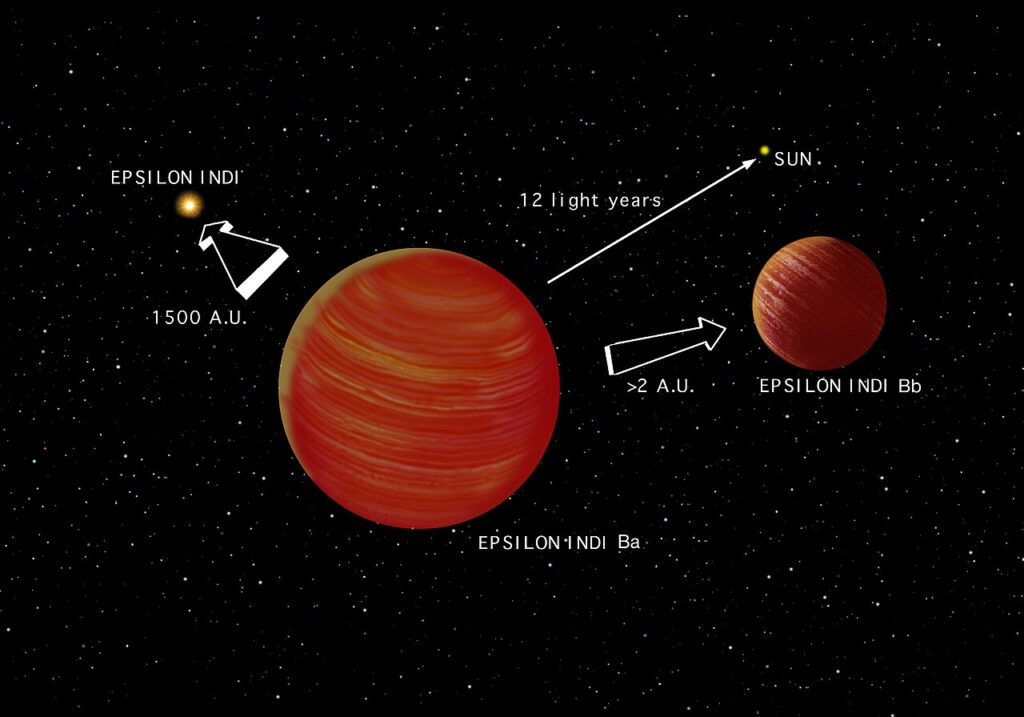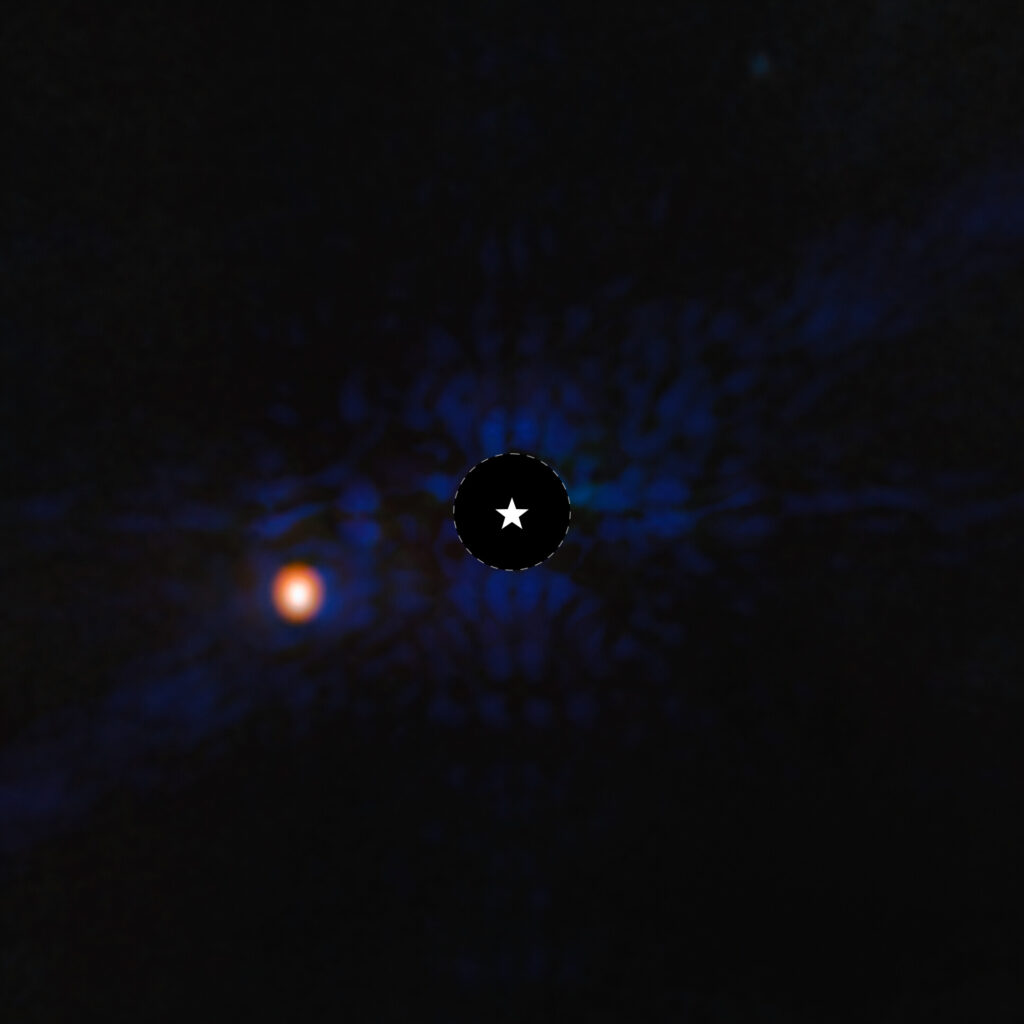An international team of astronomers used the James Webb Telescope (JWST) to photograph an exoplanet. It orbits the nearby star Epsilon Indi.
12 light-years from Earth
Epsilon Indi is located 12 light-years away from Earth. It is an orange dwarf. Epsilon Indi has about the same age and metallicity as the Sun, but is about five times dimmer than our star.

In previous observations, astronomers have managed to discover that a pair of brown dwarfs orbit around Epsilon Indi. They were also able to find traces indicating that this star may have a planetary companion. But until recently, this was only circumstantial evidence. That all changed with the JWST observations.
Photo of exoplanet
To date, astronomers have managed to directly photograph just over eight dozen planets. The vast majority of them are gas giants in young star systems. Their atmospheres are still heated to high temperatures and they are an active source of infrared radiation.
However, Epsilon Indian is no longer a young star. This means that the exoplanets orbiting around it should be cold and most of their radiation will be in the mid-infrared range. Waves in this part of the spectrum are completely blocked by the Earth’s atmosphere, so the only option was to use JWST.

The space telescope has met expectations. The MIRI mid-infrared camera mounted on it did indeed manage to photograph the exoplanet, designated Epsilon Indi Ab. It appears as an orange dot in the image. The star itself is covered by the coronagraph disk.
Epsilon Indi Ab turned out to be not quite what scientists expected. It is about twice as massive as Jupiter, lies a little farther from its star, and has a different orbit. Its atmosphere is also slightly different from model predictions. At short wavelengths, it turned out to be dimmer than expected. This could mean that it has significant amounts of methane, carbon monoxide and carbon dioxide and is very cloudy.
As of today, Epsilon Indi Ab ranks twelfth on the list of closest exoplanets to Earth and first on the list of closest exoplanets more massive than Jupiter. It is also one of the coldest exoplanets directly photographed. Its estimated temperature is 2 °C.
According to the researchers, they plan to make new observations of Epsilon Indi Ab in the future to refine the parameters of its atmosphere. They also hope to photograph other similar exoplanets with JWST.
According to JPL


